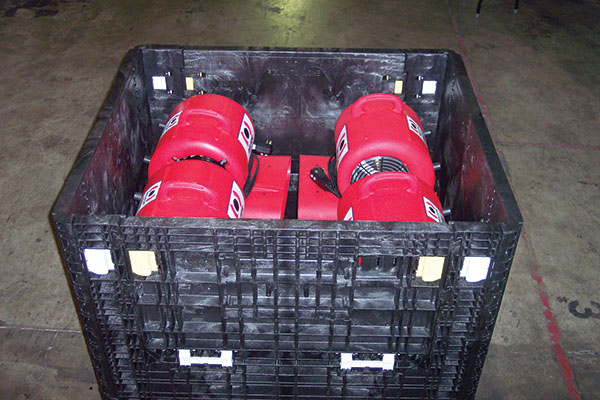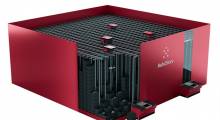According to the Hurricane Research Division of the National Oceanic & Atmospheric Administration, nearly seven hurricanes hit the United States every four years on average, with three major ones crossing Atlantic coastal regions every five years. That probably isn’t much of a surprise, considering the recent spate of hurricanes—including Harvey, Irma and Maria in 2017, and Florence and Michael in 2018.
After a storm, disaster recovery and property restoration companies arrive to help home and business owners reverse the damage, trucking in thousands of pieces of equipment to affected regions. Industrial condensers, heavy-duty dehumidifiers, blowers, vacuums, ventilators—are all needed at a moment’s notice. Yet, outside the hurricane season, they need to be stored safely and securely.
Enter the reusable bulk container, says Ken Beckerman, president of Flexcon. “They’re durable and can be stacked up to four high, which allows disaster recovery companies to store their equipment inside or outside in a minimal footprint,” he explains, noting that the 45 x 48 x 34-inch dimension is the most commonly used. “The container takes the beating instead of the equipment.”
Additionally, power utility companies are using the same bulk containers to store and stage transformers so they’re easy to transport in the event of an outage.
“The containers can be quickly loaded by forklift onto a trailer,” adds Beckerman. To ensure that the equipment stored inside the container isn’t damaged during transport, it’s often bolted to a solid base (sometimes a pallet) placed into the container using an opening created by removing a sidewall.
Such applications are finding these bulk containers to be more affordable thanks to material and molding improvements that reduce production cycle times and extend the products’ usable life.
“We’ve also evolved their design so that if a hinge or sidewall is damaged, we offer replacement parts for changeouts with a screwdriver,” Beckerman adds. “The container doesn’t have to be returned to us to fix; anyone can make the repair on the fly. That allows our customers to maximize the life expectancy of their containers as a piece of capital equipment.”
Article topics








